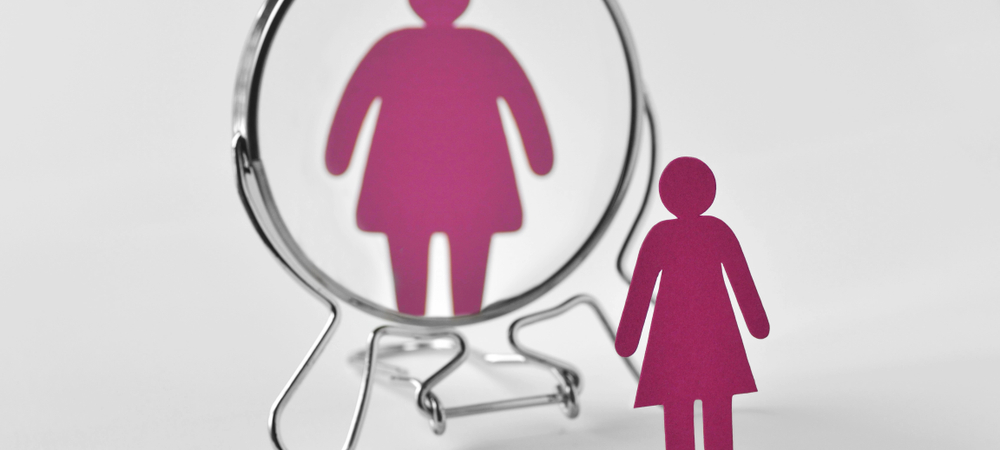
We all sometimes worry about how we look, but body dysmorphic disorder (BDD) is a serious illness in which a person is overly worried about minor or imaginary physical flaws. These perceived flaws are usually not apparent to anyone else or are seen as minor. A person with BDD may feel so anxious about these physical flaws that she avoids social situations and relationships. She may also try to fix perceived flaws with cosmetic surgery.
Body dysmorphic disorder (BDD) is a serious illness in which a person is overly worried about their appearance or about minor or imaginary physical flaws. Most of us worry about our appearance sometimes or are unhappy with some part of the way we look, but these worries don’t usually affect our daily lives, such as whether we go to work or school. People with BDD check their appearance in a mirror constantly, try to cover up their perceived flaw, or worry about it for at least an hour a day, and that worry interferes with their life in some way.
Women with BDD may worry about any part of their body, such as acne or another skin problem, a scar, the size and shape of their nose, their breast size, or their body shape.
The symptoms of BDD include:
- Being preoccupied with minor or imaginary physical flaws, which usually can’t be seen by others
- Having a strong belief that you have a defect in your appearance that makes you ugly or deformed
- Having a lot of anxiety and stress about the perceived flaw and spending a lot of time focusing on it
- Frequently picking at skin
- Excessively checking your appearance in a mirror and grooming yourself
- Hiding the perceived imperfection
- Constantly comparing appearance with others to the point that it becomes your biggest focus or worry
- Constantly seeking reassurance from others about how you look and not believing them when they compliment your appearance
- Getting cosmetic surgery but not being happy with the outcome many times
One in every 50 people may have BDD. The condition is more common in women and usually starts in the teen years. People with BDD often have other mental health conditions, especially eating disorders, depression, and anxiety.
Researchers aren’t sure exactly what causes BDD, but certain factors probably play a role:
- Brain differences: Physical changes in the brain’s shape or how it works may play a role in causing BDD.
- Family history: Some studies show that BDD is more common in people whose mother, father, or siblings also have BDD or obsessive-compulsive disorder.
- Childhood experiences: Situations or events that happened in your childhood may make you more likely to develop BDD. For example, people who are teased about their bodies, whose families focused on the child’s worth only through physical appearance, or who were abused during childhood may be more likely to develop BDD.
Certain things seem to increase the risk of developing or triggering body dysmorphic disorder, including:
- A mother, father, or sibling with BDD or obsessive-compulsive disorder
- Negative life experiences, such as being teased, bullied, or abused
- Another mental health condition, such as depression or an anxiety disorder
Your doctor may treat BDD with therapy and medicines.
- Cognitive behavioral therapy: This type of therapy may involve putting yourself in social situations while forcing yourself not to check or cover up your “flaws.” Your therapist may also ask you to change your behaviors or environment at home by removing mirrors, taking less time with your beauty routine, or not using makeup.
- Medicines: Certain antidepressants can help with obsessive and compulsive thoughts and behaviors.
Getting cosmetic surgery can make BDD worse. People with BDD are often not happy with the outcome of the surgery and continue to obsess over imaginary defects.
References
- Body Dysmorphic Disorder Foundation. (n.d.). About BDD.
- Phillips, K.A., Didie, E.R., Feusner, J., Wilhelm, S. (2008). Body Dysmorphic Disorder: Treating an Underrecognized Disorder. American Journal of Psychiatry; 165(9): 1111–1118.
- Phillips, K.A. (2004). Body dysmorphic disorder: recognizing and treating imagined ugliness. World Psychiatry; 3(1): 12–17.
Source
The Office on Women's Health in the U.S. Department of Health and Human Services
Content last updated August 30, 2018
